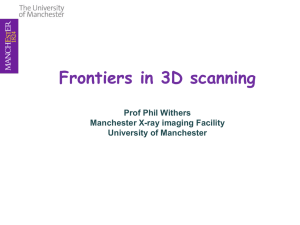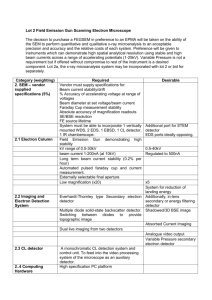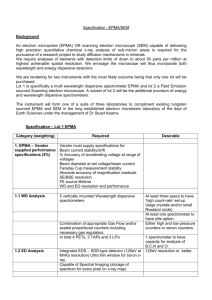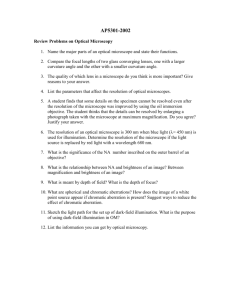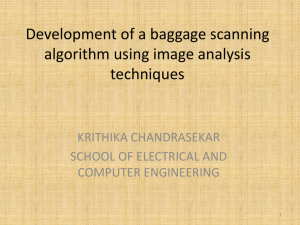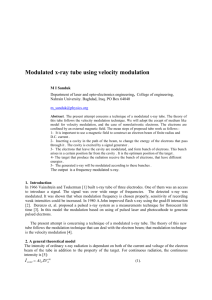X-ray nanofocus microscope
advertisement
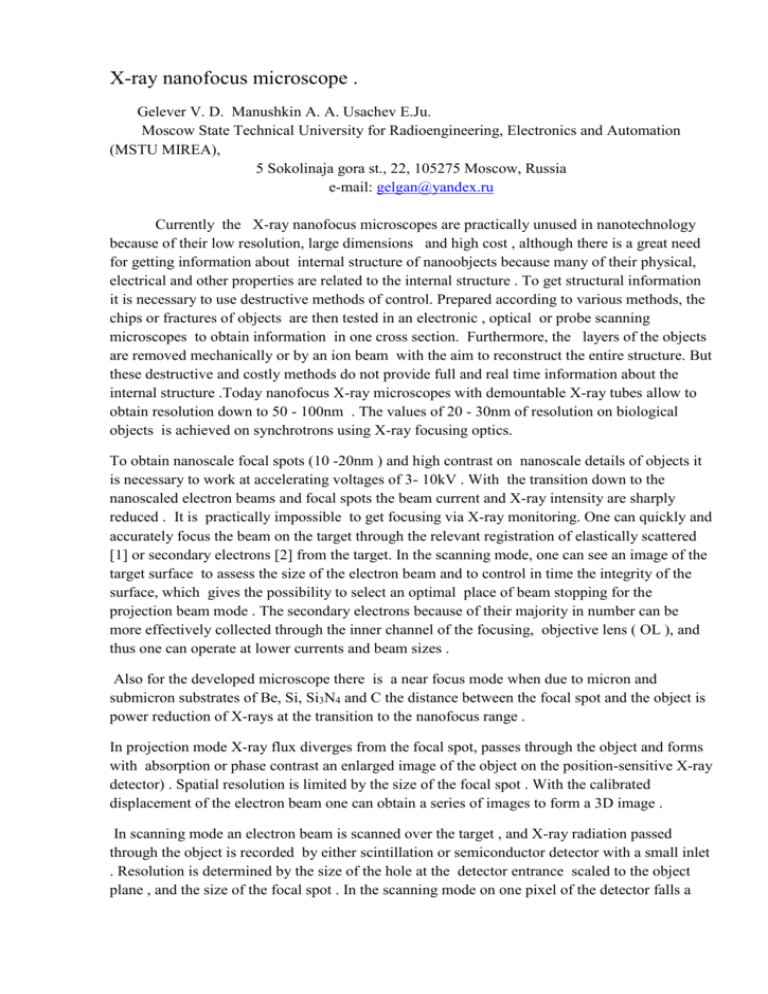
X-ray nanofocus microscope . Gelever V. D. Manushkin A. A. Usachev E.Ju. Moscow State Technical University for Radioengineering, Electronics and Automation (MSTU MIREA), 5 Sokolinaja gora st., 22, 105275 Moscow, Russia e-mail: gelgan@yandex.ru Currently the X-ray nanofocus microscopes are practically unused in nanotechnology because of their low resolution, large dimensions and high cost , although there is a great need for getting information about internal structure of nanoobjects because many of their physical, electrical and other properties are related to the internal structure . To get structural information it is necessary to use destructive methods of control. Prepared according to various methods, the chips or fractures of objects are then tested in an electronic , optical or probe scanning microscopes to obtain information in one cross section. Furthermore, the layers of the objects are removed mechanically or by an ion beam with the aim to reconstruct the entire structure. But these destructive and costly methods do not provide full and real time information about the internal structure .Today nanofocus X-ray microscopes with demountable X-ray tubes allow to obtain resolution down to 50 - 100nm . The values of 20 - 30nm of resolution on biological objects is achieved on synchrotrons using X-ray focusing optics. To obtain nanoscale focal spots (10 -20nm ) and high contrast on nanoscale details of objects it is necessary to work at accelerating voltages of 3- 10kV . With the transition down to the nanoscaled electron beams and focal spots the beam current and X-ray intensity are sharply reduced . It is practically impossible to get focusing via X-ray monitoring. One can quickly and accurately focus the beam on the target through the relevant registration of elastically scattered [1] or secondary electrons [2] from the target. In the scanning mode, one can see an image of the target surface to assess the size of the electron beam and to control in time the integrity of the surface, which gives the possibility to select an optimal place of beam stopping for the projection beam mode . The secondary electrons because of their majority in number can be more effectively collected through the inner channel of the focusing, objective lens ( OL ), and thus one can operate at lower currents and beam sizes . Also for the developed microscope there is a near focus mode when due to micron and submicron substrates of Be, Si, Si3N4 and C the distance between the focal spot and the object is power reduction of X-rays at the transition to the nanofocus range . In projection mode X-ray flux diverges from the focal spot, passes through the object and forms with absorption or phase contrast an enlarged image of the object on the position-sensitive X-ray detector) . Spatial resolution is limited by the size of the focal spot . With the calibrated displacement of the electron beam one can obtain a series of images to form a 3D image . In scanning mode an electron beam is scanned over the target , and X-ray radiation passed through the object is recorded by either scintillation or semiconductor detector with a small inlet . Resolution is determined by the size of the hole at the detector entrance scaled to the object plane , and the size of the focal spot . In the scanning mode on one pixel of the detector falls a small amount of X-rays , so it is advisable to use a large number of identical detectors , which would allow different angles to record X-rays passed through and to get a 3D image . X-ray microscope could be converted into an electron microscope , if to withdraw under the electron beam an object and to register past and secondary electrons . Actually the developed microscope is an optimal hybrid of X-ray and electronmicroscope–a hybrid nanoscope [3]. It’s design allows at low cost to include in the probe and optical microscopes to conduct comprehensive studies of nanostructured objects. Now there are two prototypes being under adjustment, and some results are shown on the pictures. References 1.K.Minami,Y.Saito,H.Kai,K.Shirota and K.Yada 2009Proc.9thInt.Conf.X-Ray Microscope Journal of Physics: Conf.Series 186 (2009) pp1-3. 2. Gelever V. D. Patent RU № 2 452 052/ Russian/ 27.12.10.3. Gelever V. D. Repin D. S. Manushkin A. A. Usachev E.Ju. http :// WWW.tntconf.org/2013/ posters.php.?conf=13. Object- film Re Fig. 1 X-Ray -projection mode Fig.2 X-Ray-scanning mode (1detector) Object- organic film of 270mkm thickness with Zn particles

